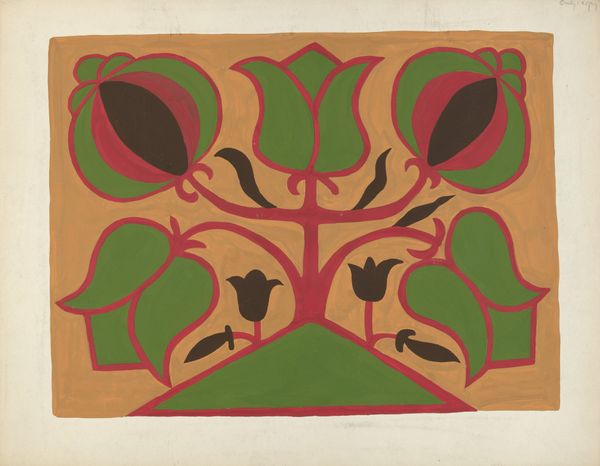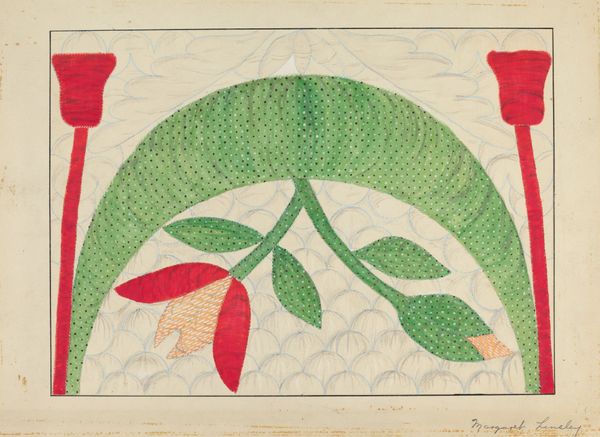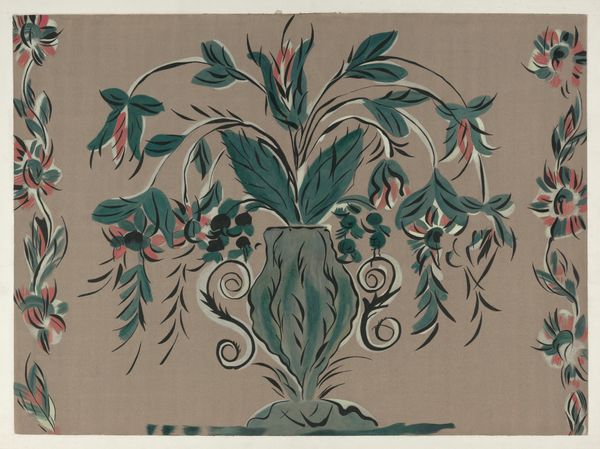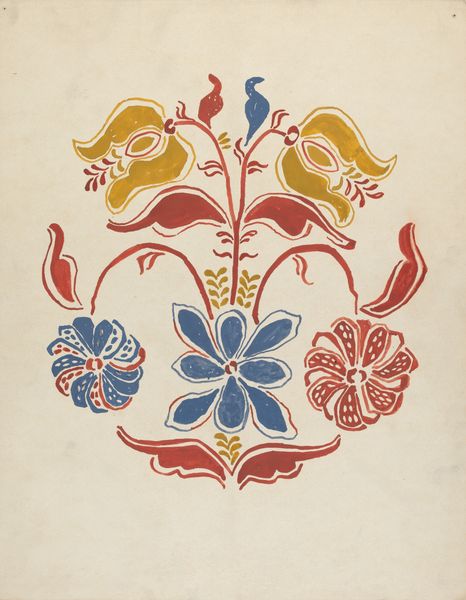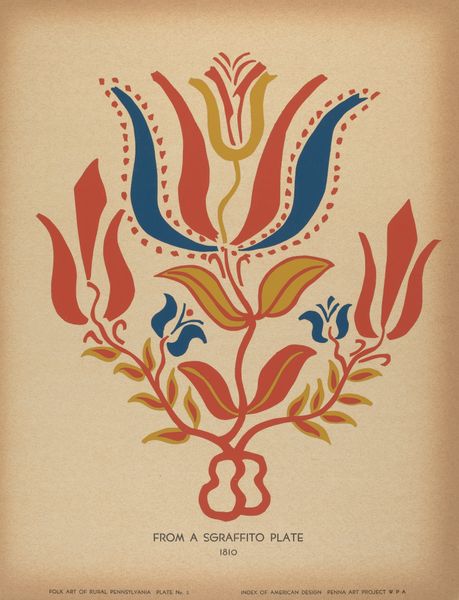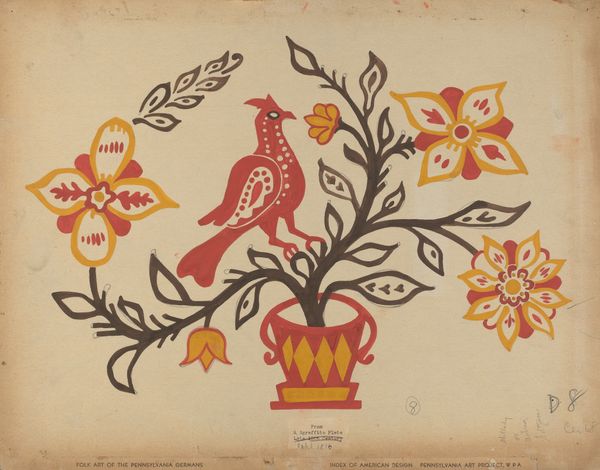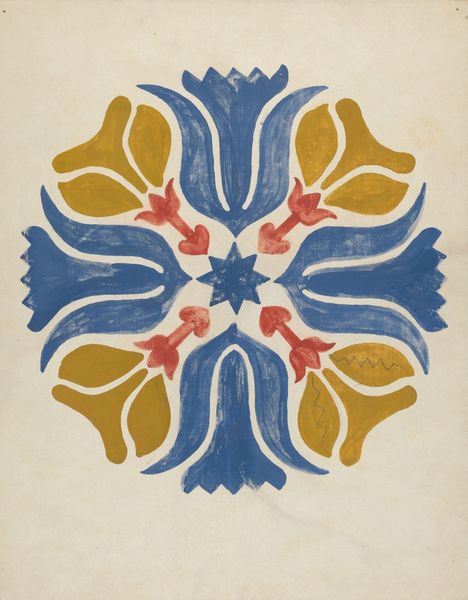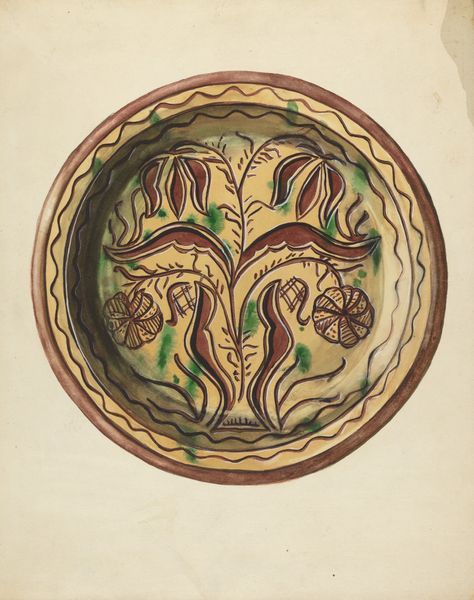
Study for Proposed Portfolio "Decorated Chests of Rural Pennsylvania" 1941
0:00
0:00
drawing, tempera
#
drawing
#
decorative element
#
tempera
#
folk-art
#
abstraction
#
decorative-art
Dimensions: overall: 35.6 x 45.9 cm (14 x 18 1/16 in.)
Copyright: National Gallery of Art: CC0 1.0
Curator: Immediately, the piece strikes me as joyful, almost playfully naive with its bold color palette and simple shapes. Editor: Quite. This tempera drawing, dating back to 1941, is actually a study for a proposed portfolio entitled "Decorated Chests of Rural Pennsylvania." Curator: Ah, that context explains a great deal. The stylized birds and flora arranged around a central axis now read as deliberate decorative elements, destined for a different medium. Editor: Precisely. The image displays folk art traditions in rendering simplified botanical forms with minimal shading or perspective. Semiotically speaking, the limited palette and use of symmetry reinforce a visual order common in traditional Pennsylvania Dutch art. Curator: But that verdant ground--is it supposed to depict landscape or suggest other decorative applications of the motif beyond a chest? It is cropped unconventionally as a shape of the object. Editor: Likely, the green area functioned to showcase this isolated ornamentation. Consider the date, 1941. At the time, preservation of American crafts occupied a distinct role during wartime, providing tangible links to past traditions. Curator: Indeed. By invoking that familiar style for this work, there's a statement about cultural preservation during a time of global crisis and disruption. This seemingly straightforward image carries the weight of a nation's longing for simpler, established values. Editor: It highlights how everyday design possesses historical relevance, illustrating both material history and popular identity during times of turmoil. Curator: Reflecting on it, I notice how that decorative program achieves more depth from something quite so basic through bold lines, color choice, and symbolic resonance in its day. Editor: A worthy reflection and apt encapsulation of what such design achieves when tradition responds both formally, aesthetically, and politically, and culturally.
Comments
No comments
Be the first to comment and join the conversation on the ultimate creative platform.


